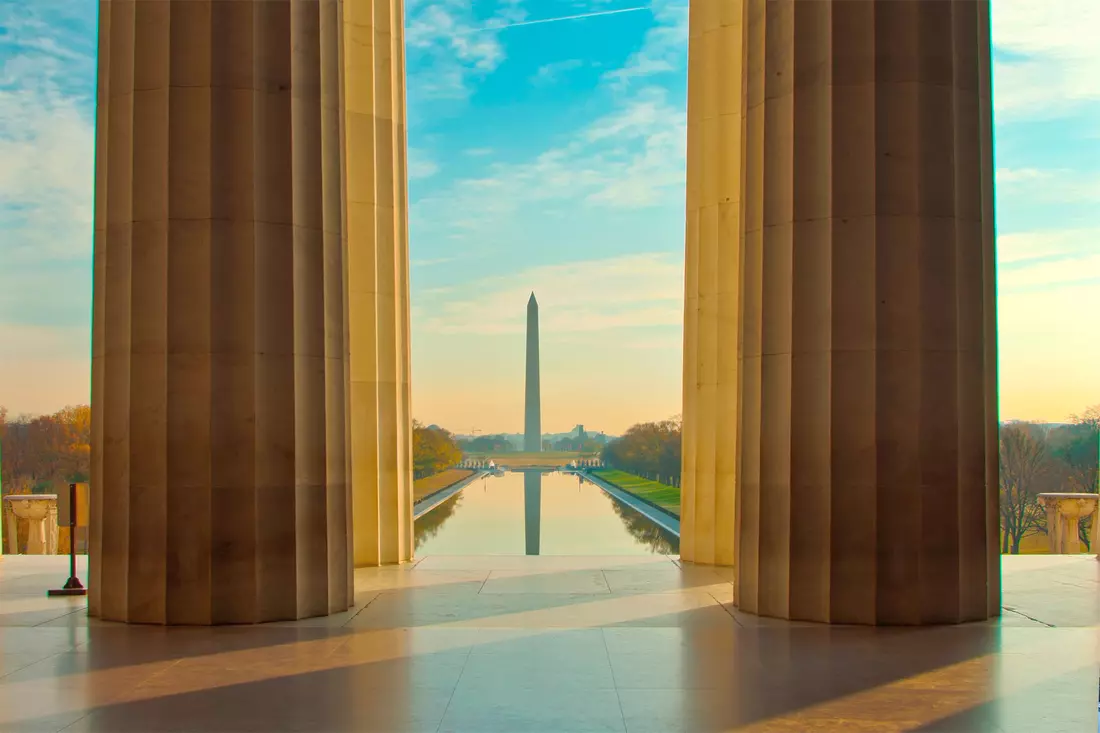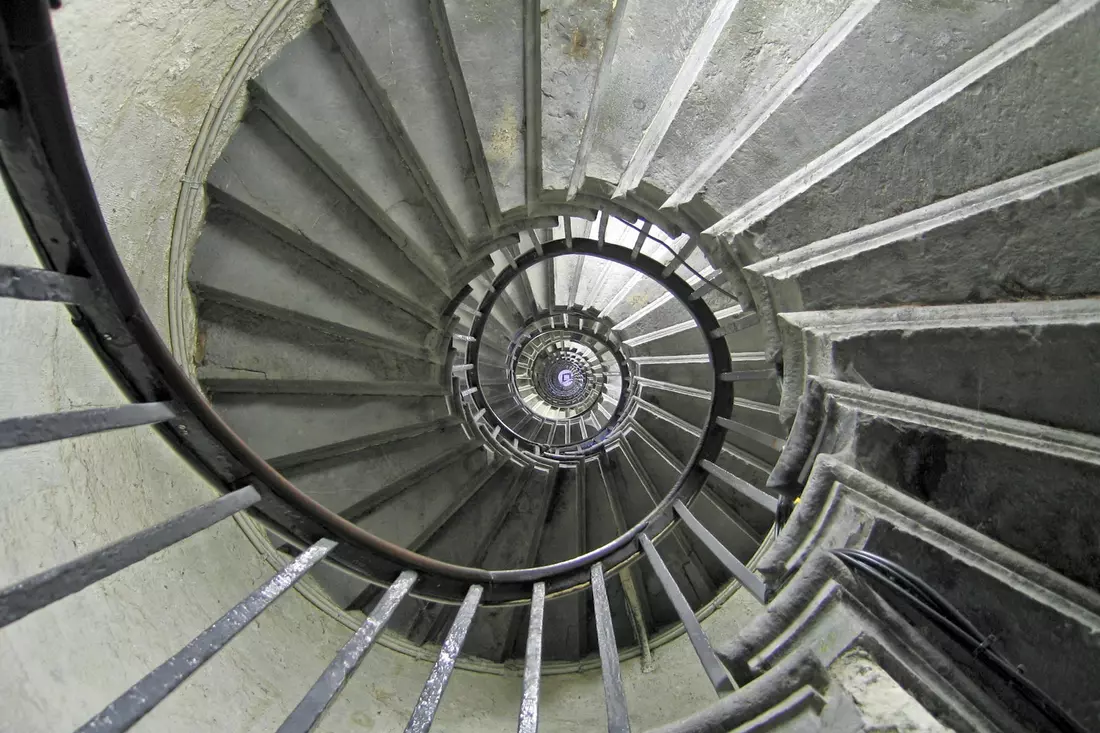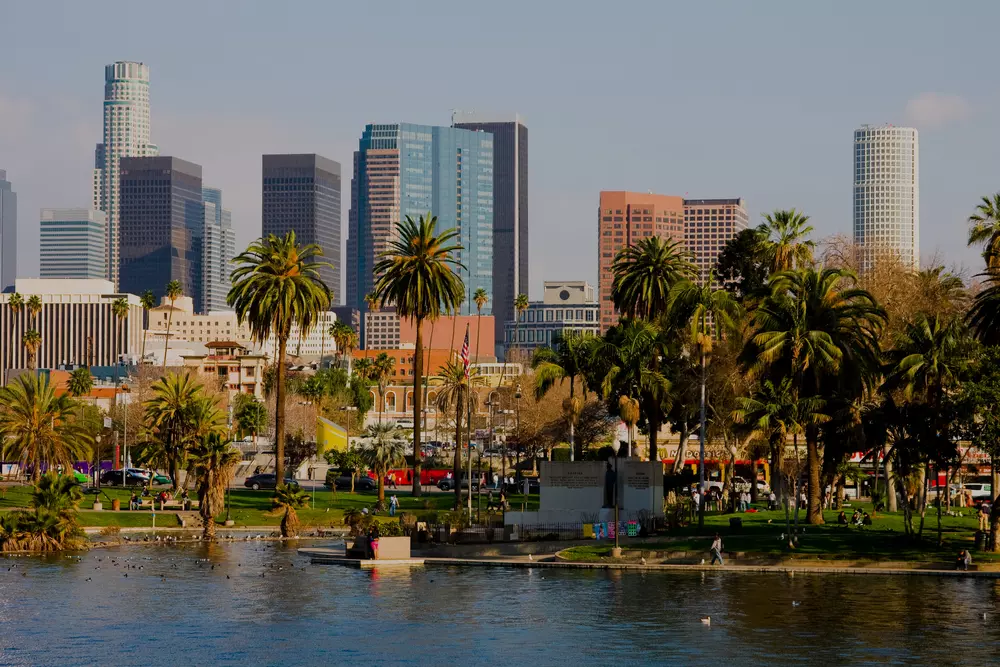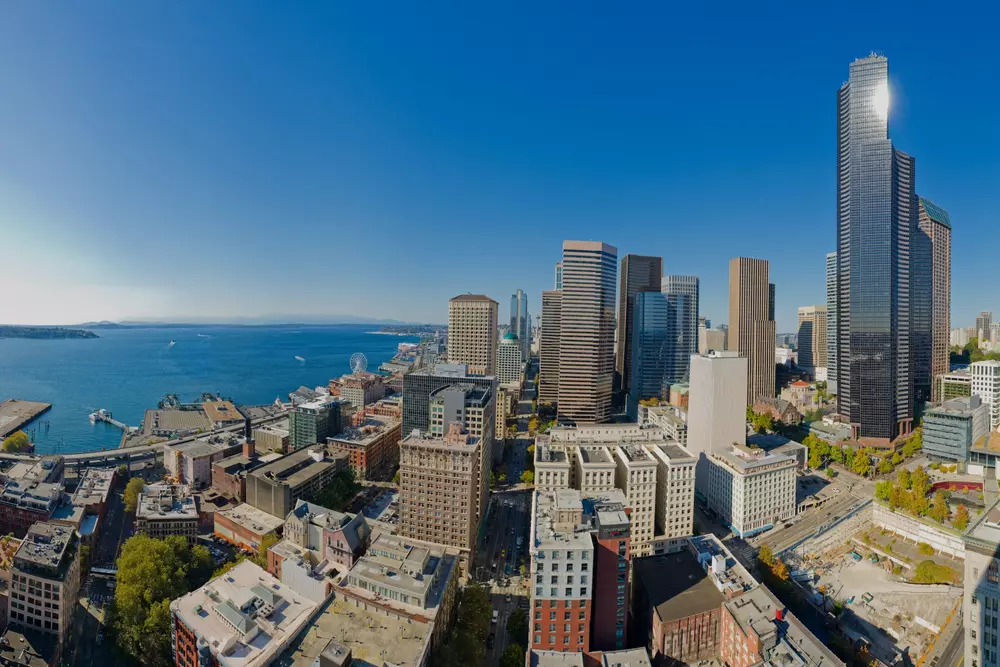Expectations vs. Reality
The Washington Monument surprises many. Firstly, because it visually has no direct connection to George Washington. Secondly, it's perhaps the only patriotic project the Americans couldn't fully realize.
Read on to discover why it has this particular shape, the original vision behind it, and how the final execution shifted from grand plans to compromises.

How Was the Obelisk Built?
Discussions on how the Washington Monument should look still occur. What stands today doesn't quite match the original plan. In 1832, the centennial of George Washington's birth inspired a nationwide fundraising campaign. Citizens raised approximately $800,000 in today's money over three years.
In 1836, a design competition was held, and Robert Mills won with a proposal for the world's tallest obelisk, surrounded by a colonnade. Under the obelisk, a statue of Washington and 30 other Revolutionary War heroes were planned. The project was beautiful and universally liked — except for the price, estimated at about $22 million in today's terms.
The decision was made to build the most noticeable part of the monument, the obelisk, first. It was believed that the visible progress would inspire more donations. Construction began in 1844 and continued until 1885, with various communities and even the Pope donating stones. However, the rest of the plan was never realized.

Features of the Monument
The Washington Monument stands directly opposite the White House on the National Mall. It is a 169-meter tall obelisk with a four-sided pyramid at the top. The hollow interior contains only stairs and elevators leading to an observation deck with views in all directions.
Plans to add more to the monument never materialized due to budget constraints and the structural challenges of the obelisk. Surveys show that many citizens find the monument "modest" for a symbol of the U.S. capital. Some even propose funding the originally planned colonnade. However, practical concerns, including damage from a 2011 earthquake, prevent any expansions.
Reflecting Pool
To enhance the obelisk's appearance, the Reflecting Pool was built nearby, famously featured in the movie "Forrest Gump." The pool's design ensures that the water remains calm, reflecting the full height of the monument and creating an additional effect of stability and reliability.

Interesting Facts
- Construction Took Decades
Building the monument took over 30 years due to political disagreements and financial difficulties. - Time Capsule
A time capsule containing historical documents and artifacts is buried at the base of the monument. - World's Tallest Structure
The monument was the tallest structure in the world until the completion of the Eiffel Tower in 1889. - Color Variations
If you look closely, you can see a color change in the monument at a certain height, due to the use of different marble quarries during the construction hiatus. - Illuminated Spire
The obelisk is topped with a 100-gram aluminum pyramidion, which acts as a lightning rod and symbolizes progress and modern technology. When the monument was completed in 1884, aluminum was considered a precious metal.

Specialists at American Butler know much more about the iconic places and structures in the U.S. You can read about them on our website, and if you want to see them in person, we will gladly help you make the most of your visit.
Fill out the form below with your questions, tour requests, or other service inquiries. Our specialists will contact you with comprehensive answers.





























